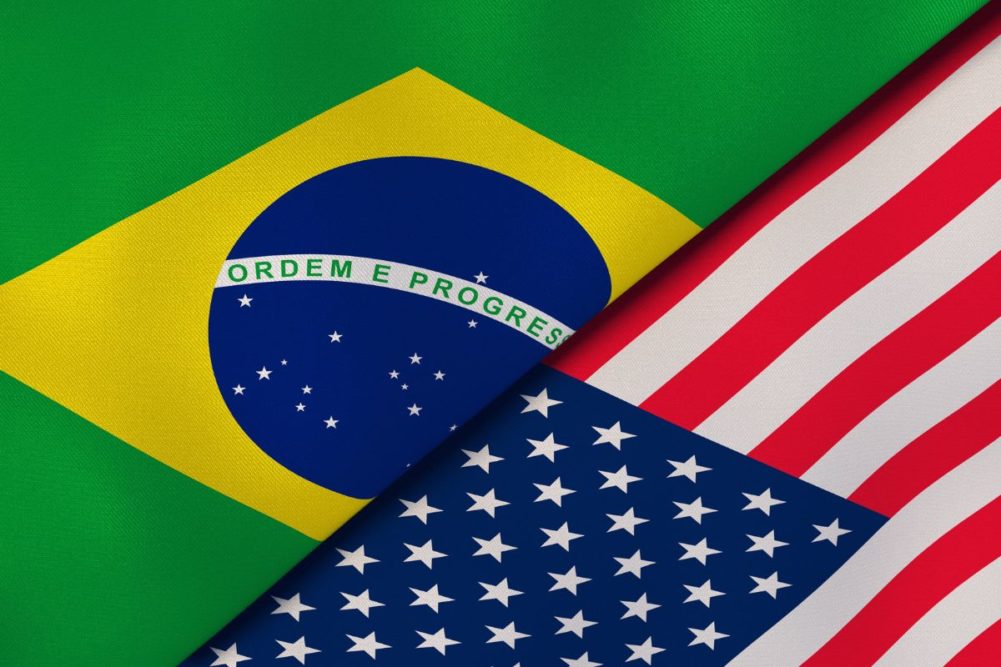WASHINGTON, DC, US – Brazil’s share of global soybean trade could increase to 60.6% by 2033, according to a study released last week by the US Department of Agriculture’s Economic Research Service (ERS).
For many years, the United States was the world’s largest soybean exporter, but Brazil exported more soybeans than the US in 2012-13 and has since seen its share of the global soybean trade increase.
The study, which was conducted from the 2017-18 marketing year through 2021-22, compared factors such as production costs, returns and competitiveness that have impacted soybean exports from the two countries.
The study found that total costs per bushel of soybeans in the United States exceeded total costs per bushel of soybeans in Brazil in 2021-22.
“Average national farm-level production costs per acres of soybeans in Brazil were 19.9% below the United States, largely because of lower land and capital costs,” the authors of the study (Constanza Valdes, Jeffery Gillespie and Erik Dohlman) said.
The study noted that improvements in Brazil’s overland transportation infrastructure over the past decade resulted in costs savings per tonne for exporting soybeans from the main producing state, Mato Grosso, through southern ports. Average inland transport costs between 2017-18 and 2021-22 decreased to $77 per tonne, compared with $98 per tonne from 2008-09 to 2012-13.
“Overland transportation improvements in central Brazil to provide access to the northern ports lowered truck rates, resulting in costs savings of $28 per tonne, further improving Brazil’s Mato Grosso’s competitive position,” it said.
Brazilian soybean exports from northern Mato Grosso to Shanghai, China, via the Santarem port represent a savings of $25 per tonne in landed costs, compared with exports via the traditional Santos port in the southern region, the study said.
The study also found that:
- Brazilian producers had higher national average returns per bushel over total costs than the United States in 2021-22 ($4.05 compared to $2.13)
- Average national returns per bushel above operating costs for soybeans were highest for the United States in 2021-22 – 16.4% above Brazil’s returns.
- The Midwest US was the lowest-cost exporter of soybeans. Parana in Brazil was the next lowest-cost exporter, primarily due to its location close to a port and low internal transport costs.
- The Brazilian State of Mato Grosso is competitive with the United States in the export of soybeans despite higher inland transport costs due to lower soybean costs of production.
Brazil, which exports 60% of the soybeans it grows, has become the biggest supplier to China, the world’s largest soybean importer.
For the first 11 months of 2023, total soybean shipments from Brazil into China were 64.97 million tonnes, up 25% from the previous year, according to data from China’s General Administration of Customs. Total US imports so far this year are down 8% at 20.36 million tonnes, according to the data.
The customs data showed Brazil shipped 5.2 million tonnes of soybeans to China in November, a 108% increase year-on-year. Attractive prices for the South American nation’s record crop drew Chinese buyers during the month, while drought on the Mississippi River and in the Panama Canal slowed US purchases.
The USDA Foreign Agricultural Service projects that Brazilian soybean exports in the 2023-24 marketing year could reach 100 million tonnes, more than double the United States’ expected shipments.





